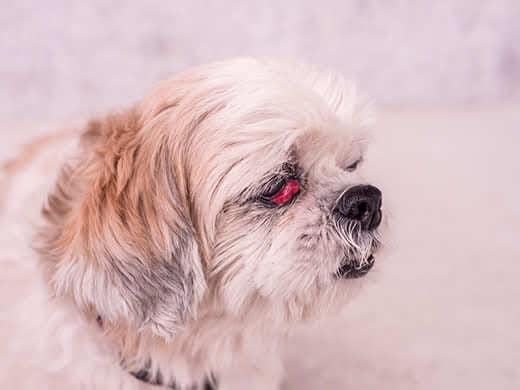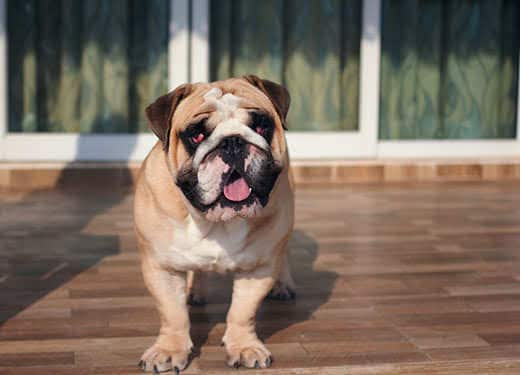
-
Find the right food for your pet
Take this quiz to see which food may be the best for your furry friend.
Find the right food for your pet
Take this quiz to see which food may be the best for your furry friend.
Featured products
 Adult Healthy Cuisine Roasted Chicken, Carrots & Spinach Stew Dog Food
Adult Healthy Cuisine Roasted Chicken, Carrots & Spinach Stew Dog FoodDelicious roasted chicken paired with tender vegetables in a succulent stew
Shop Now Adult 7+ Perfect Digestion Chicken, Whole Oats & Brown Rice Recipe Dog Food
Adult 7+ Perfect Digestion Chicken, Whole Oats & Brown Rice Recipe Dog FoodScience Diet's breakthrough nutrition supports ultimate digestive well-being & healthy microbiome for dogs age 7+
Shop Now Small & Mini Savory Stew with Chicken & Vegetables Dog Food
Small & Mini Savory Stew with Chicken & Vegetables Dog FoodA delicious complement to the nutrition of Science Diet Small & Mini 7+ dog food
Shop NowFeatured products
 Adult 7+ Tender Tuna Dinner Cat Food
Adult 7+ Tender Tuna Dinner Cat FoodWith delicious chunks in a decadent gravy
Shop Now Adult 7+ Senior Vitality Chicken & Vegetable Stew Cat Food
Adult 7+ Senior Vitality Chicken & Vegetable Stew Cat FoodImproves Everyday Ability to Get Up & Go
Shop Now Adult Savory Entrée Can Variety Pack Cat Food
Adult Savory Entrée Can Variety Pack Cat FoodPrecisely balanced nutrition with the delicious taste of savory minced chicken to help fuel the energy needs of cats during the prime of their life
Shop Now -
Dog
- Dog Tips & Articles
-
Health Category
- Weight
- Food & Environmental Sensitivities
- Urinary
- Digestive
- Joint
- Kidney
-
Life Stage
- Puppy Nutrition
- Adult Nutrition
- Senior Nutrition
Cat
- Cat Tips & Articles
-
Health Category
- Weight
- Skin & Food Sensitivities
- Urinary
- Digestive
- Kidney
-
Life Stage
- Kitten Nutrition
- Adult Nutrition
Featured articles
 Do Dogs and Cats have Belly Buttons?
Do Dogs and Cats have Belly Buttons?Learn whether cats & dogs have belly buttons like humans, what the function is, and if there are any health concerns associated with it.
Read More Why Are Dogs and Cats So Cute?
Why Are Dogs and Cats So Cute?If waggy puppy dog tails and furry kitten yawns make you swoon, you're not alone. Why are cats so cute? And, dogs too! Let's find out!
Read More Does My Pet Hate Me?
Does My Pet Hate Me?Learn tips for bonding with your pet if you've ever thought, 'My dog doesn't like me, or 'Why do I have a standoffish cat?'
Read More -


Believe it or not, all dogs possess a third eyelid at the inner corner of their eye. Also called the nictitans (or nictitating membrane), as noted by the Merck Veterinary Manual, it serves as a kind of windshield wiper to help keep the cornea moist and free of debris.
Cherry eye occurs when that third eyelid becomes displaced. If this applies to your pup, you'll want to know how to treat cherry eye in dogs. Let's take a closer look at this condition and what causes cherry eye in dogs.
What Is a Cherry Eye?
A "cherry eye" is what veterinarians also refer to as a prolapsed gland of the third eyelid.
Every third eyelid contains a gland that resides in the deeper part of the membrane, anchored by a supporting flap of cartilage and hidden under the lower lid. Its job is to manufacture lubricating tears that provide moisture, along with other substances useful for the maintenance of a healthy cornea (the clear structure that covers and protects the eye).

The third eyelid's gland can become dislodged (prolapsed) from its normal location and consequently protrude into the inner corner of the eye. Instead of the typically flat, triangular structure observed in the corner of the eye, a small, bulbous, pink structure can be readily seen — hence the term "cherry eye."
It's important to distinguish a cherry eye from a swollen third eyelid, which can result from conjunctivitis or trauma. The cherry eye is distinctly bulbous and typically pink (the color of a dog's mucous membranes). Another clue is that cherry eye is usually seen in young, growing dogs and seldom in adults.
Causes of Cherry Eye in Dogs
What causes cherry eye in dogs? What would make this normally hidden structure pop out of its spot? Is it the shape of the eye that's at fault or failure of the supporting structures?
The answer isn't necessarily so simple, and several factors may be involved. The truth is that vets don't know exactly what causes cherry eye in dogs. However, we do know that cherry eye is a hereditary trait. This is why we assume that a variety of genes determining eye and eyelid conformation are likely involved.
Though dogs of any breed can develop this eye condition, bulldogs, Boston terriers, pugs, shih tzus and other brachycephalic breeds (short-headed, flat-nosed dogs) are predisposed. In these dogs, the conformation of the eye, in which the eye's orbit is shallow and the eye protrudes in a "bug-eyed" manner, seems to be a factor in the development of this condition.


Tasty Tips
How Cherry Eye Can Affect Dogs
If untreated, dogs with cherry eye typically develop swelling and dryness of the exposed mucous membranes, which can become abraded, especially if a displaced gland of the third eyelid proves irritating to the dog (and it usually does). The subsequent rubbing or pawing at the eye leads not just to further inflammation of cherry eye but also to conjunctivitis and even corneal injury, which can ultimately result in eye damage and vision loss.
Another problem with cherry eyes is their tendency to cause damage to the tear gland itself. Once displaced, circulation is impeded and the gland fails to function properly. Because this gland is so crucial to maintaining 30% of the eye's normal moisture, loss of function means that affected dogs typically develop dry eye, or keratoconjunctivitis sicca, as noted by Veterinary Partner. Dry eye requires lifelong medication and, what's more, is usually irreversible.

How to Treat Cherry Eye
Cherry eye is considered a highly treatable condition. The first step for treatment involves the careful replacement of the gland in its normal position along with anti-inflammatory medication to relieve swelling and discomfort.
Definitive treatment often requires surgery. Visiting a board-certified veterinary ophthalmologist is strongly recommended in this case. The surgical approach to cherry eye requires a careful incision into the eyelid margin over the gland, replacing the gland deeper into the orbit, then suturing the incision closed. An Elizabethan collar and medication will be required postoperatively. Dogs who manage to rub their eyes in spite of a collar may need sedatives, home crating or hospitalization so that they can properly heal. Follow-up surgery may be required depending on how your dog's eye heals.
There's a great deal written about cherry eye prevention, especially for breeds predisposed to it. Although some vets suggest that routine use of artificial tears can keep the gland from becoming irritated and therefore keep it from becoming dislodged, there is no research to suggest this route of prevention is successful.
The most effective approach to prevention requires breeders to consistently spay and neuter all dogs who develop cherry eye, thereby limiting the possibility of this genetic trait in any future offspring. If you still have questions about what causes cherry eye in dogs, talk to your local vet to learn more and determine the best way to prevent it.


Dr. Patty Khuly is an award-winning veterinarian known for her independent thinking, her spirited pet advocacy, her passion for the veterinary profession, and her famously irreverent pet health writing.
Dr. K is an honors graduate of both Wellesley College and the University of Pennsylvania School of Veterinary Medicine. She received her MBA at The Wharton School of Business as part of the prestigious VMD/MBA dual-degree program. She now owns Sunset Animal Clinic, a veterinary practice in Miami, Florida.
Related products
Related articles

Learn how today's wet dog food blends have gotten a face lift, and how you'll provide your dog the nutrition he needs in the form he loves.

Learn about choosing the right dog food to help ensure your adult dog will receive the correct balance of nutrition.

Proper nutrition for your pregnant or nursing dog is vital to her and her puppy's health. Learn what you should do provide her with the proper nutrients.

Learn the the dangers of feeding your dog chocolate, which types are most dangerous, and what to do if you discover that they have consumed chocolate.

Put your dog on a diet without them knowing
Our low calorie formula helps you control your dog's weight. It's packed with high-quality protein for building lean muscles, and made with purposeful ingredients for a flavorful, nutritious meal. Clinically proven antioxidants, Vitamin C+E, help promote a healthy immune system.
Put your dog on a diet without them knowing
Our low calorie formula helps you control your dog's weight. It's packed with high-quality protein for building lean muscles, and made with purposeful ingredients for a flavorful, nutritious meal. Clinically proven antioxidants, Vitamin C+E, help promote a healthy immune system.

